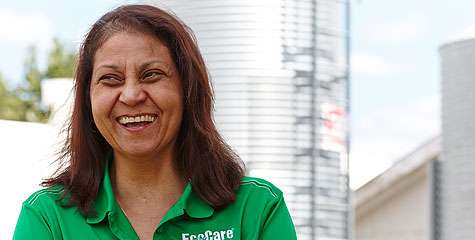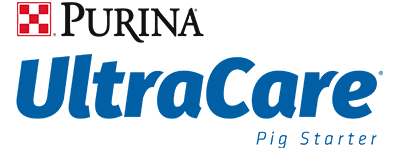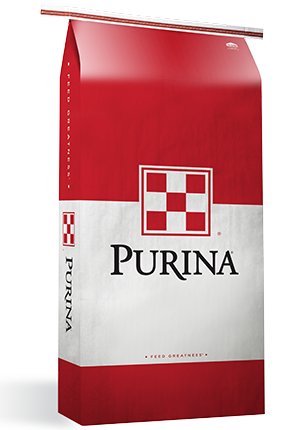
Study: Using Pig Vaccines and Gel Together
Young Animal : Health Stresses
Introduction
Swine industry feed suppliers are continually striving to create techniques and tools to reduce the additive stressors imposed on the weanling piglet, to increase advantageous behaviors (feeding and drinking) and to reduce aggrieve interactions. In addition to social reorganization, pigs are often vaccinated during the nursery phase to reduce the impact of potentially harmful diseases. It has been noted by swine practitioners that at the time of vaccination many pigs lie down, rest more and reduce the amount of feed consumption over the vaccination period.
One product on the market is a gel-based feed that is designed to ease the transition from a liquid diet (sow's milk) to dry ration. This gel-based feed contains high quality ingredients; it is highly palatable and provides the young pig with both a feed component and a water component thereby influencing feed consumption and intestinal health.
The gel can be used in addition to a standard weaned pig solid ration. Although, often recommended to be used at the time of weaning, the possibilities of implementing the gel around the time of vaccination is a novel concept that might impact the individual pig’s overall performance.
The objective of this study was to determine if the addition of gel at the time of vaccination provided benefits to the nursery pigs’ performance.
Materials and Methods

In conclusion, the use of gel at the time of vaccination for the nursery pig offered some short term performance benefits. Nursery pigs fed gel, weighed more and had better ADFI and ADG when a known short term stressor (vaccination) was administered. This is useful tool for pork producers to consider implementing to help the individual nursery pig over this sensitive time period in the nursery phase.
Swine industry feed suppliers are continually striving to create techniques and tools to reduce the additive stressors imposed on the weanling piglet, to increase advantageous behaviors (feeding and drinking) and to reduce aggrieve interactions. In addition to social reorganization, pigs are often vaccinated during the nursery phase to reduce the impact of potentially harmful diseases. It has been noted by swine practitioners that at the time of vaccination many pigs lie down, rest more and reduce the amount of feed consumption over the vaccination period.
One product on the market is a gel-based feed that is designed to ease the transition from a liquid diet (sow's milk) to dry ration. This gel-based feed contains high quality ingredients; it is highly palatable and provides the young pig with both a feed component and a water component thereby influencing feed consumption and intestinal health.
The gel can be used in addition to a standard weaned pig solid ration. Although, often recommended to be used at the time of weaning, the possibilities of implementing the gel around the time of vaccination is a novel concept that might impact the individual pig’s overall performance.
The objective of this study was to determine if the addition of gel at the time of vaccination provided benefits to the nursery pigs’ performance.
Materials and Methods
- Animals and Housing: The trial was conducted in the spring of 2007. A total of 192 crossbred pigs at 3 weeks of age (9.31 lbs.) were received from a commercial farm and housed in Double L® confinement nursery buildings. Two identical barns, each with two rooms of 14 pens (15.9 ft) each were utilized. Each nursery pen contained one nipple waterer and one three-hole feeder (45.6 x 4.7 x 9.4 inches) attached to the front of the pen, providing free access to feed and water throughout the duration of the trial. Flooring was plastic and fully slatted. Environmental control was provided by a positive pressure system utilizing: two 15.6 inches passive exhaust outlets located under the pig flooring area, one ceiling mounted 60,000 BTU propane barn heater and one Varifan ECS-2 electronic controller for each individual room. All pigs were identified by one plastic ear tag located in their left ear, blocked by weight and sex and sorted on the day of arrival to achieve pen groups of equal weight and cohorts of two barrows and two gilts per pen providing 4.0 ft of floor space / pig. Pigs were checked twice daily by two experienced caretakers at 0600 and 1600 hours. All procedures were approved by Iowa State University’s Animal Care and Use Committee.
- Treatments: Four treatments were compared. Control group defined as unvaccinated and without supplemental gel at days 9 to 11 post-weaning (PW). Treatment one (TRT 1) were provided supplemental gel at days 9 to 11 PW without vaccination. Treatment two (TRT 2) were vaccinated but did not receive supplemental gel at days 9 to 11 PW. Treatment three (TRT 3) received supplemental gel at days 9 to 11 PW and were vaccinated.
- Vaccination Schedule: A commercial single dose of Mycoplasma hyopneumoniae killed bacterin (2 cc) vaccine per pig was given to treatment groups’ intra muscular in the neck region. The dose was given on day 10 PW.
- Climatic Measurements: Two Hobos per room were hung from the ceiling (3.9 ft. length of rope) and recorded relative humidity (%) and temperature (oC) every 10 minutes. Maximums, minimums and averages are presented on a weekly basis (Table 1).

- Dry Feed and Gel Delivery: Pigs were weighed on days 0, 3, 7, 14, 21, 28 and 42 of the trial, respectively. All pigs received a common Phase 1 diet from days 0 to 7 PW, a pelleted Phase 2 diet from days 8 to 14 PW, a pelleted Phase 3 diet from days 15 to 28 PW, and a pelleted Phase 4 diet from days 29 to 42 PW. Pigs on Treatment 1 and Treatment 3 received gel mixed with pellets in a supplemental feeder (Kane creep feeder) from days 9 to 11 PW (the day before vaccination, the day of vaccination and the day after vaccination).
- Performance: Pigs that were removed or died were counted, sexed, weighed and the causes of removal or death were determined. All dry feed and gel offered to the pigs and any feed that was removed due to soiling or dampness was weighed and recorded daily. Average daily gain (ADG), average daily feed intake (ADFI) and feed to gain ratio were calculated.
- Removals and deads: No pigs were removed or died in the CONT or TRT 2 groups. One pig was removed from TRT 3 (failure to thrive and lack of competition with its co-specifics). One pig was removed and one died (chronic pneumonia) from TRT 1. The removal was attributed to failure to thrive and lack of competition with its co specifics.
- Pig weights: Pig weights at days 14 (P = 0.048) and 21 (P = 0.045) differed with pigs offered gel weighing more than their non-gel counterparts (Table 2). On day 28 PW pigs offered gel tended (P = 0.10) to weigh more than their non-gel counterparts. However, for all other weigh days there were no differences. A trend (P = 0.08) was noted for pigs that were not vaccinated weighing more on day 14 PW of the trial compared to their vaccinated counterparts but there were no (P > 0.1) other differences between weigh days over the duration of the trial for nursery pigs when vaccinated or not vaccinated (Table 2).

- Days 7 to 14: ADFI, Feed to gain and ADG: ADG from days 7 to 14 improved (P = 0.048) for pigs that were provided gel and there tended (P = 0.09) to be an improved ADG for pigs that were not vaccinated. Pigs provided gel over days 9, 10 and 11 PW, and for days 7 through 14 PW, had superior (P = 0.001) ADFI compared to their no gel counterparts. ADFI improved (P = 0.002) on day 10 PW (day of vaccination) and days 7 through 14 PW (P = 0.010) for pigs that were not vaccinated compared to their vaccinated counterparts. Feed to gain from days 7 to 14 PW increased (P = 0.004) for pigs that had gel versus those that did not. There were no (P = 0.98) vaccination effects for Feed: gain (Table 2).
- Overall ADFI, Feed: gain and ADG: ADG (1.1 ± 0.01 vs. 1.0 ± 0.01 lbs.), ADFI (1.4 ± 0.02 vs. 1.3 ± 0.02 lbs.) and Feed: gain (1.3 ± 0.01 vs. 1.3 ± 0.01) did not (P > 0.05) differ between the gel and no gel groups, respectively. ADG (1.1 ± 0.01 vs. 1.1 ± 0.01 lbs.), ADFI (1.4 ± 0.02 vs. 1.3 ± 0.02 lbs.) and Feed: gain (1.3 ± 0.01 vs. 1.3 ± 0.01) did not (P > 0.05) differ between the vaccination and non-vaccination groups respectively. There were no (P > 0.05) gel by vaccination interactions for any measures collected over this trial.
In conclusion, the use of gel at the time of vaccination for the nursery pig offered some short term performance benefits. Nursery pigs fed gel, weighed more and had better ADFI and ADG when a known short term stressor (vaccination) was administered. This is useful tool for pork producers to consider implementing to help the individual nursery pig over this sensitive time period in the nursery phase.




